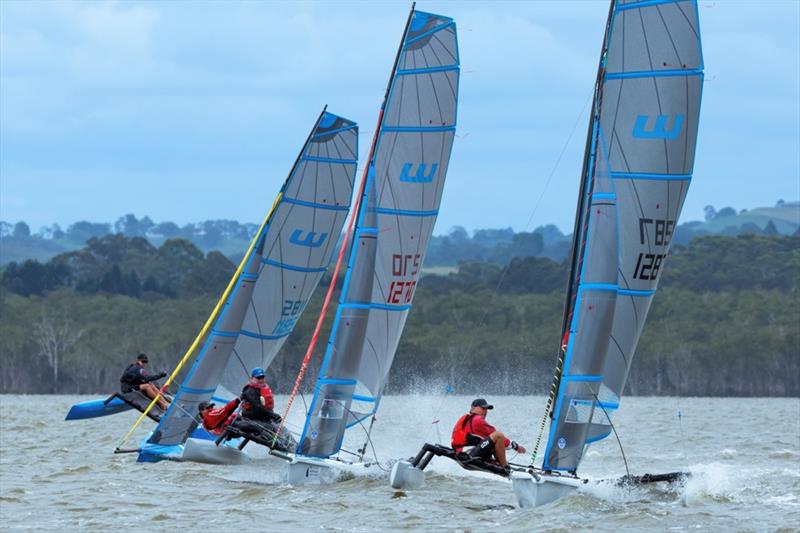
Multiple national champion of many classes, George Owen, in the lead © Russell Witt
December 08th, 2023
Some boats start with a bang and fade away, and some boats start with a smaller noise, and build up to something bigger. The Wētā has become such a boat with strong fleets all around the world.
For such a relatively short time on the water since release in 2007, this is one clever boat.
History
Hatched by Roger Kitchen with multihull designer input by Tim Clissold, then fully evolved and still evolving by Roger and his son Chris, this little boat looks like it will become as ubiquitous worldwide as the little bent legged Wētā insect it was named after in its home land of New Zealand.
The detailed history is online, but suffice it to say that a small fleet was produced and tested in NZ for production to commence in China, and then more successfully in the Xtreme factory in Indonesia where the 29er and other one design boats are built.
The rest is history.
Evolution
As the boats moved production around the southern hemisphere, hulls became slightly lighter in one incantation with float flanges removed. Rudders were improved, daggerboards lengthened early in the day. Pin head mainsails are nearly all now the gorgeous powerful squaretop, and the self-tacking jib has made us all smile more every time we tack or gybe.
The Aussies
I was always interested in the quirky little 4.4 metre trimaran, but was a little wary of the justified cost of building such a complex little package. My first foray after a test sail was to find a well-used #177 for under 10k. I told my wife it was not for racing, but for cruising, but after some fun "trial" races at Lake Cootharaba Sailing Club, I got the bug and joined the wonderful fleet growing there under the guidance of Rear Commodore and Qld dealer Todd McVey ably assisted by life member Hamish Urquhart. After a few years I let my retirement package include a new boat #1184, about 25 k at the time for a new complete boat and trailer. With the covid shortages and a huge world wide demand for a Wētā, wait times are now nearly Toyota-like, and the total cost is slowly increasing like all other production boats.
There are racing fleets along the East Coast with varying numbers, all growing as I write this. 10 or 12 boats is a nice fleet at the Lake, and smaller groups assemble at Bundaberg, Hervey Bay, Wivenhoe Dam, around a range of Sydney venues, Pittwater, Harwood on the Clarence, Melbourne, and the site of the last Nationals at Gippsland Lakes Yacht Club, Paynesville. Apologies to the smaller fleets not named but forming.
There is a growing number of 2-up crews in their own class, with the majority of fleets usually solo sailors. Both fleets have attracted numerous state and national champions, and a healthy gender mix helps with the socialising on and off the water.
To help moving competitors around the country, Todd McVey surprised us all with the construction of the Dreamliner, a double length, double height trailer which can move 4 boats cheaply to regattas. Keep an eye out for it again this year at Airlie Beach Race Week.
Our great little club at Lake Cootharaba will be running this year's national championships, and with the overseas enquiries being fielded, this could quite well become an Interdominion or even World Championships!!
Why Wētā?
Mates often ask me why I am besotted with such a strange looking insect. Richard Morwood, one of the early adopters, has already written a great Wētā article for Multihull World a few years back, and here is my take on the bug.
I love having the footprint of a laser when folded. Fitting on a jetski trailer, owners poke them in all sorts of places, and many overseas guys leave them rigged at clubs due to lack of space at home.
I love rigging and knowing that I will usually be disturbed by another inquisitive sailor wondering what I am building. (Usually 20 minutes covers it)
I love cruising my boat; in fact, I do this more than racing. A soft esky is secured inside the transom or inside the main hull, and I head out for a full day, either around the islands of Moreton Bay, or anywhere else I am taking a break. Coffee on King Island, lunch on Peel Island, or I just release the sails and eat on the water. I haven't overnighted yet, (a lovely lady at Tin Can Bay regularly does it solo with the 6.5M main sail and a furling jib setup to avoid potential capsize) but many have. It would be easy to sleep in the cockpit. In fact, the Wētā has been used in longer events like the Race to Alaska.
I love having 3 sails so that from 0-30 knots I can use a combination of sails to always maintain a fast angle. In light upwind with 2 onboard you can always unfurl the gennaker to build up speed nearly as high as dead upwind. And that self-tacker!
I love being able to use my body weight float hiking instead of hanging off a trapeze like on my last few boats. A 65-year-old trapezing alone in the middle of Moreton Bay is just dumb. Float hiking is where you wedge your feet in the toestraps and hang your butt over the outer rail and sit on the float while steering and playing the sheet. In this position upwind, a perfectly balanced boat in 15 knots can easily exceed 12 knots upwind, and then blast downwind with all sails drawing at up to 20 knots before the short waterline length makes things a little hairy.
I love having a boat that works fine out of the box, and needs no extra work to keep it going fast.
I love sitting down after a race and just talking about the sailing. No measurement ratings, no performance handicaps, no bullshit. Just the one design sailing.
I love having the support from NZ that keeps us going in the right direction, choosing only to make the improvements mentioned above and not changing anything that would disadvantage racing owners of existing boats.
I love having a worldwide network of mates enjoying exactly what we are enjoying.
At the time of publication, the East Coast states are competing in their state championships leading up to an exciting National Championship at Lake Cootharaba Sailing Club. Spectators are welcome, at this venue you can actually walk to the windward mark and cheer on the fleet! In the Single handed fleet, defending champion and local sailor George Owen will be working hard to hold off previous winner from Bundaberg Glenn Foley, who just won our state titles. Ian Richardson will be bringing his NSW crown for a place at the table, and the latest form of Victorian champ Andrew Boyes has already show he is a force to reckon with.
This really is a great summer of sailing, especially on a Wētā!
More information here
Source: https://www.sail-world.com/news/269542/Weta-story-and-Australian-Nationals-buildup?source=email
By Peter Hackett
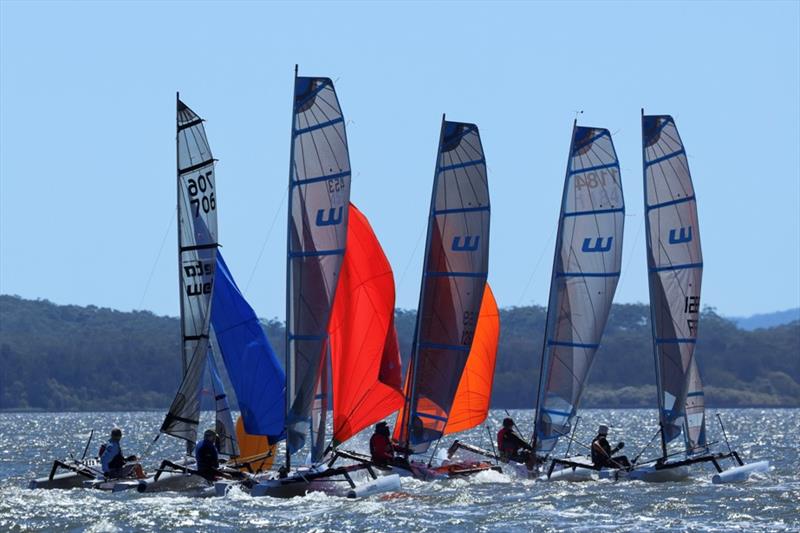
Tight racing in the nationals lead-up - photo © Russell Witt
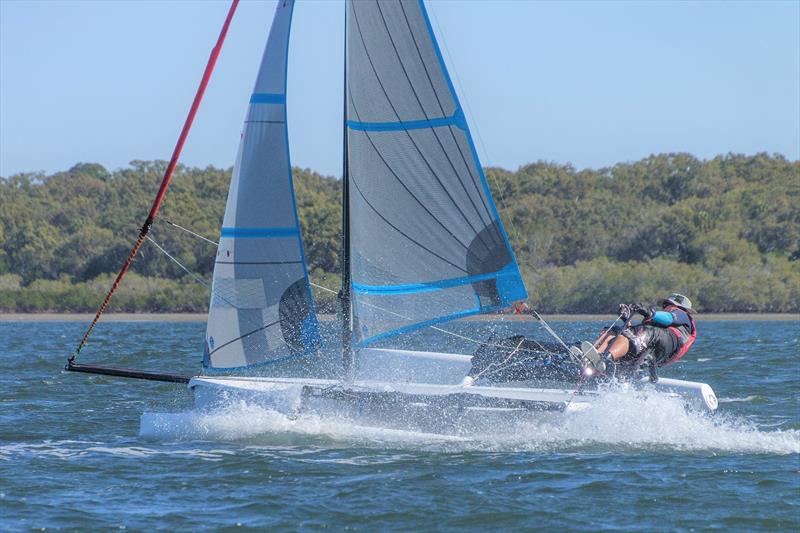
Brighter hike - photo © Julie Hartwig
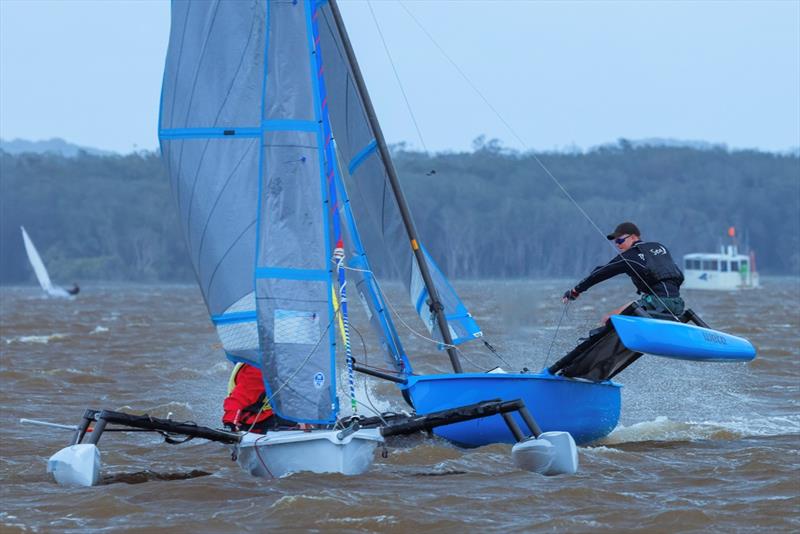
Wētā - photo © Russell Witt Photography
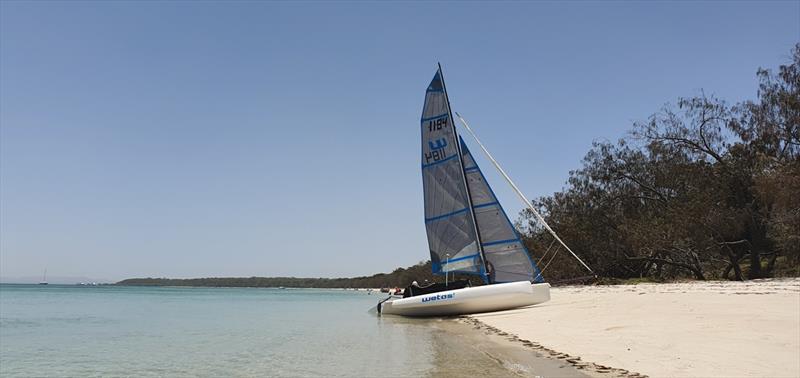
The perfect pocket cruising boat at Peel Island, Moreton Bay - photo © Peter Hackett
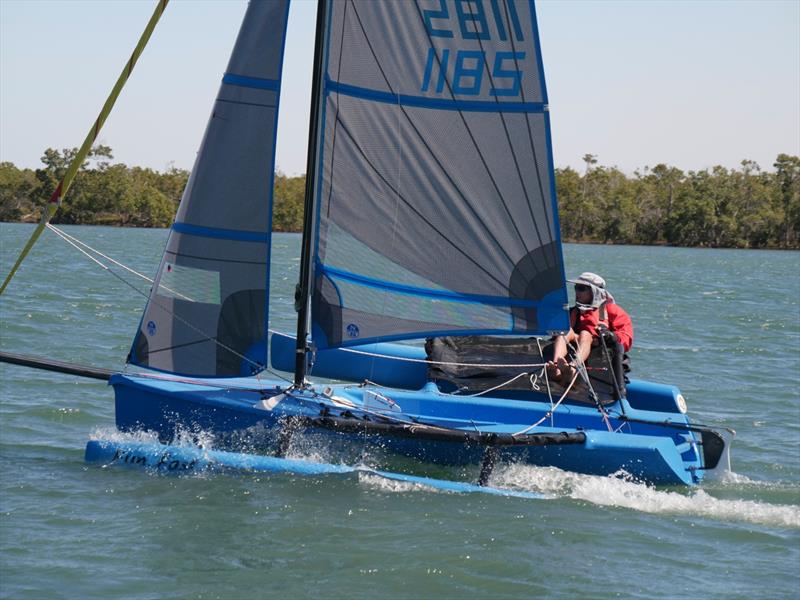
Glenn Foley float-hiking - photo © Julie Hartwig
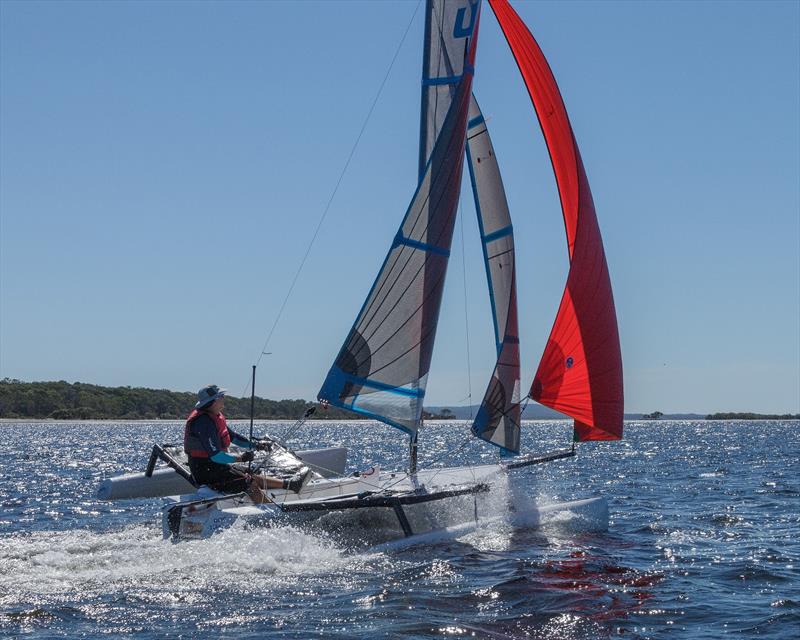
Just blasting along the Sandy Straits - photo © Julie Hartwig
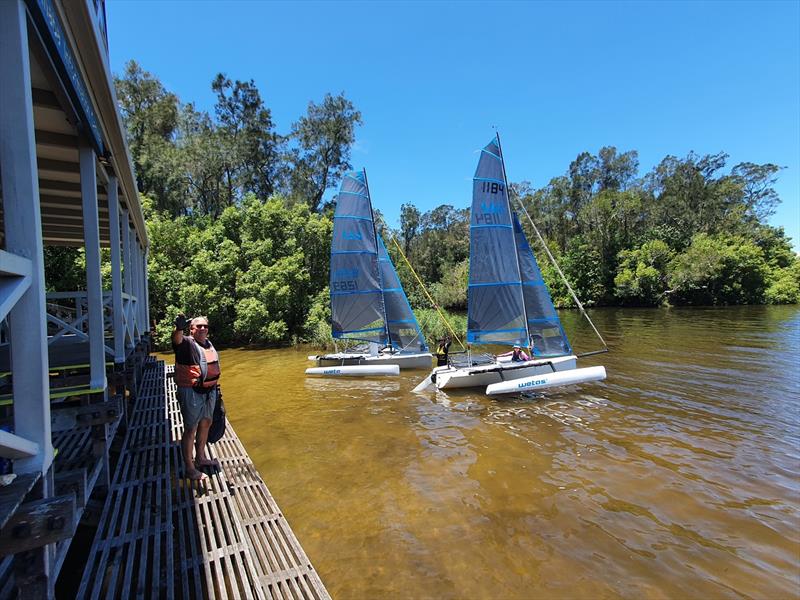
A couple of crews exploring the Cooloola Wetlands - photo © Peter Hackett